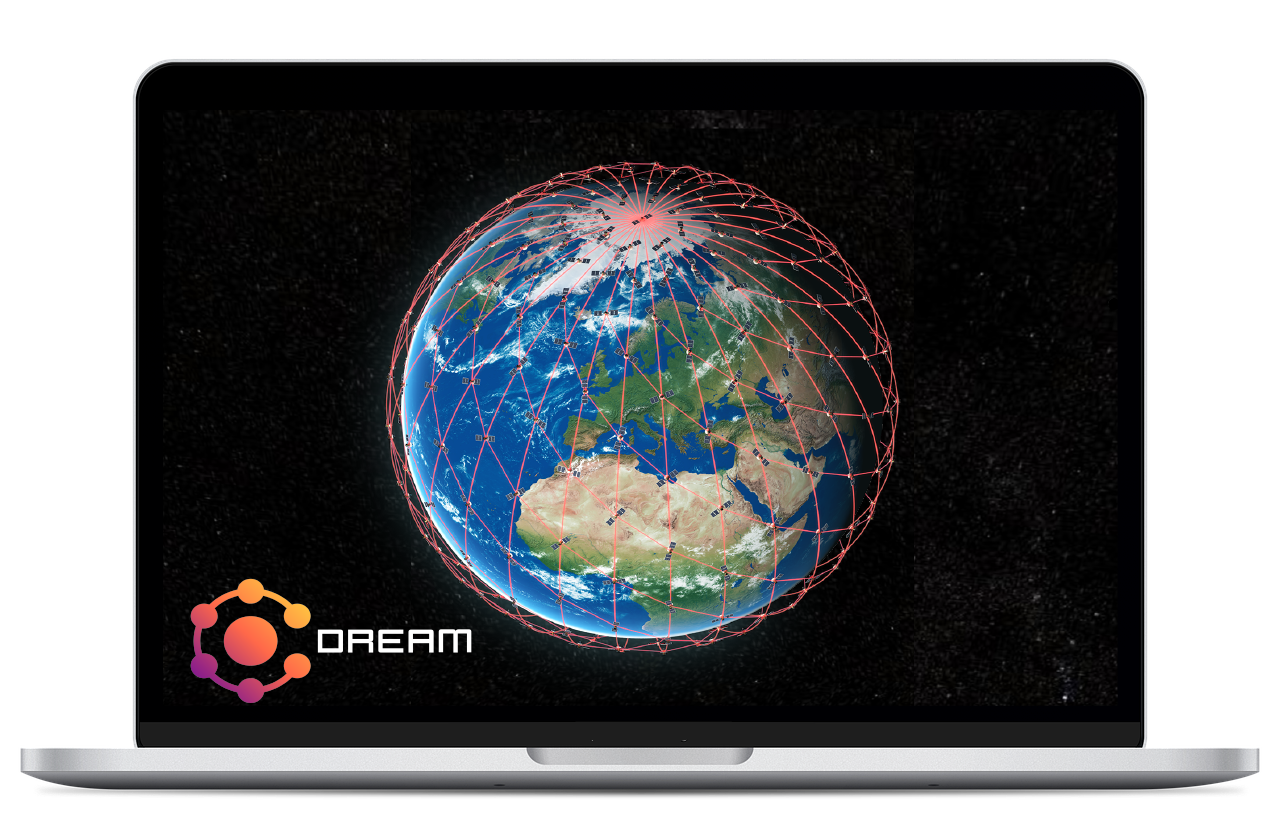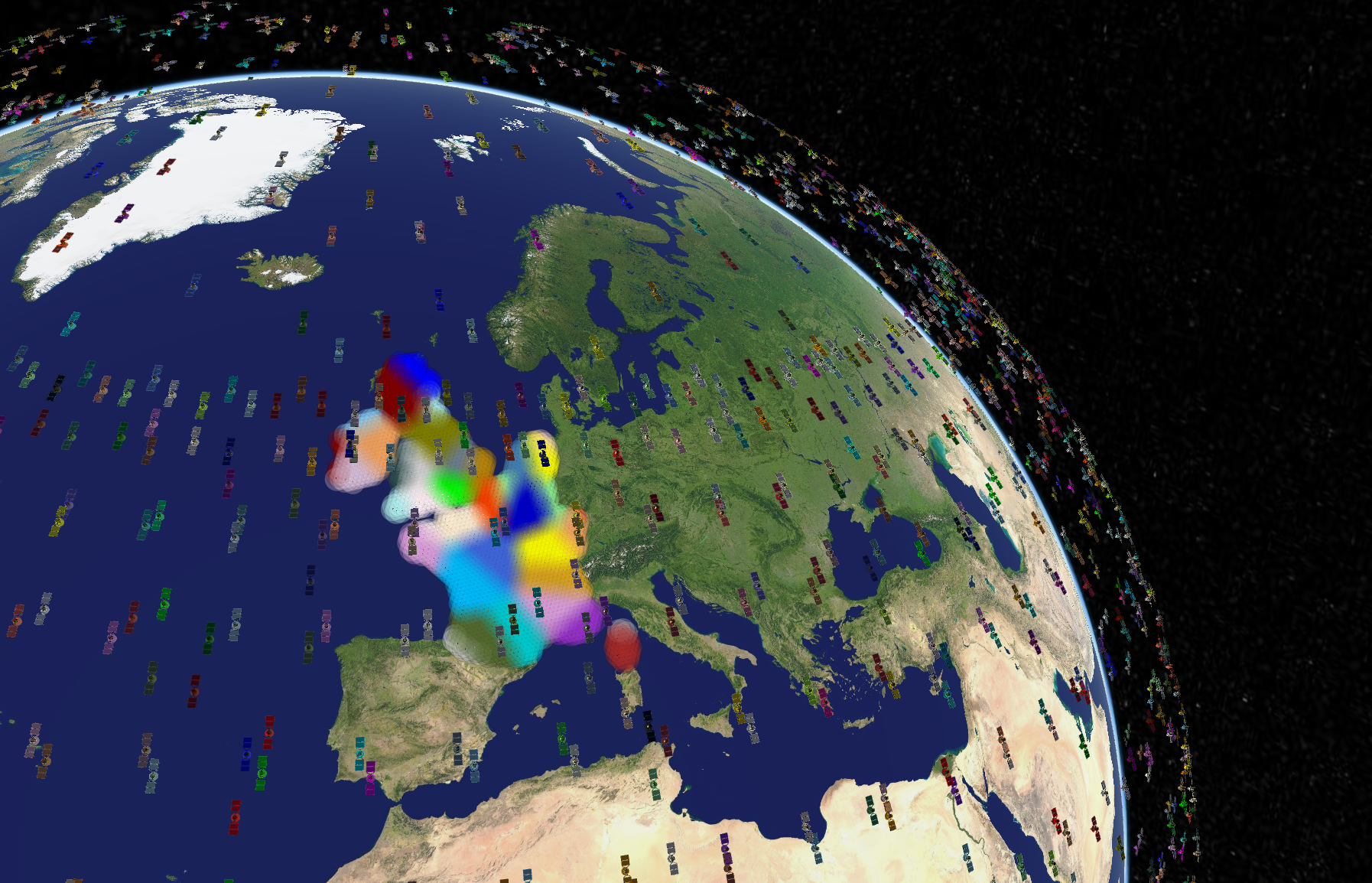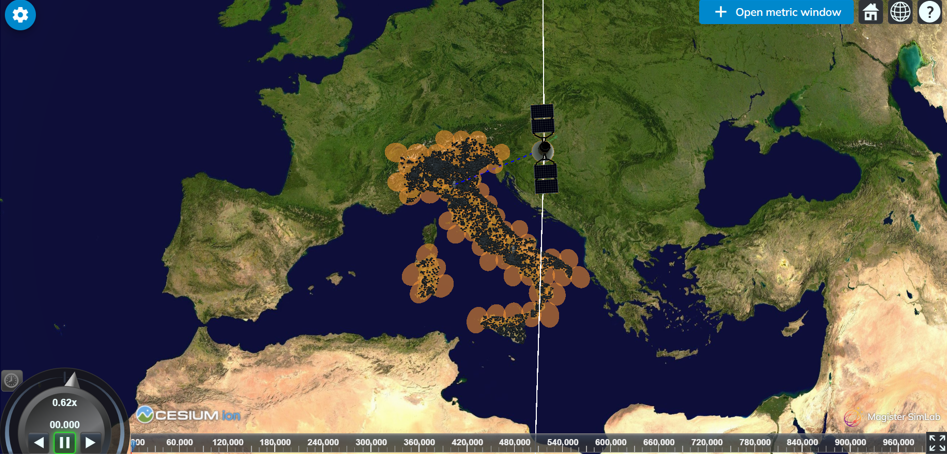C-DReAM is a Python implemented simulator with the capability to simulate various sized NGSO and GSO satellite constellations. It’s a link budget / capacity level simulator that operates on a configurable time resolution.
With C-DReAM, you can evaluate satellite system capacity, optimize constellation parameters, analyze the coexistence of satellite and terrestrial systems – and more.
C-DReAM is highly configurable, so it allows customer and project specific modifications.
Perform geospatial and coverage analysis
Analyze the coexistence of satellite and terrestrial systems
USE CASES
See how C-DReAM helped research future technologies in these projects
Forsway: Comparison project of DVB-S2X/RCS2 and 5G NR-NTN technologies
EAGER: Researching future 5G-Advanced and 6G NTN technologies
FEATURES
Multi-Orbit Satellites
- Configurable constellations
- TLE files
- Trace files
Beams
- Configurable beam patterns
- Quasi-Earth-Fixed (QEF) or Earth-Moving (EM) beams
Bandwidths and resolution
- Highly configurable
Frequency band
For example:
- FR1/S-band
- FR2/Ka-band
Air interface
- 5G NR-NTN (IoT-NTN)
- DVB-S2X/RCS
Payload resources
- Transmission power
- Frequency band/split
- Time resources
RRM
- API for different resource allocation algorithms
Various frequency reuse schemes
For example:
- FRF-1
- FRF-3
Key Statistics
For example:
- Number of visible satellites
- C, I, SNR, SINR
- Throughput, load, capacity
UEs/terminals
- Many ways of inputting terminals (locations)
- Traffic demand (kbps)
- Handheld (omni-directional) / VSAT terminals







